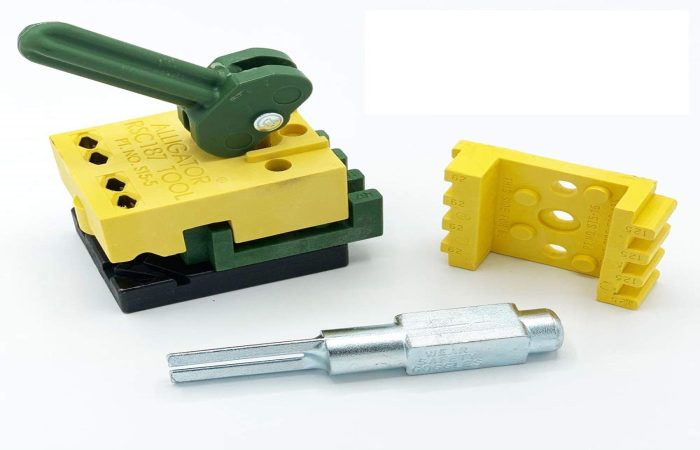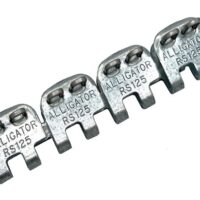Conveyor Belt Lacing and Repair Kits

Conveyor Belt Lacing Options
Conveyor belts often need to be cut and spliced together to form an endless loop. This allows belts to be installed around pulleys and conveyor systems to move product. The two
Alligator Staple Lacing
Lacing Repair Kits
Mechanical Lacing Types
Mechanical Belt Fasteners use staples, solid plates or hinged plates installed onto belts. Belt ends are joined endless using removable pins or permanent plate connections. Read more about Conveyor Belt Fasteners.

Bolt Solid Plate
Strong holding from top and bottom plate compression

Bolt Hinged Lacing
Strong, reliable, adjustable fastening over smaller pulleys

Rivet Solid Plate
High tension applications for a long lasting hold

Rivet Hinge Lacing
Popular on rubber plied and PVC solid woven belting
Vulcanized End Lacing Options
Vulcanized Endless Spliced Belts use chemicals or heat vulcanization to join belt ends. This often gives a stronger, permanent splice with no mechanical fasteners. Read more about Vulcanized Belt Lacing options.

Endless Lap Splice

Finger Splice

Double Finger Splice

Skived Splice
Belt Lacing and Installation Tools
Many types of lacing can be installed or replaced on site or at an end user’s facility. This can greatly minimize downtime and cost. Belt Lacing Installation Tools and repair tools are available for a range of lacing systems.

Staple Fastner Tool
Alligator® Ready Set Staple Fastener Tool for use with Alligator staple sizes RS62, RS125 and RS187.
Conveyor belt lacing options, installation tools and repair kits. Mechanical Belt Fasteners use staples, solid plates or hinged plates installed onto belts. Belt ends are joined endless using removable pins or permanent plate connections. Vulcanized Endless Spliced Belts use chemicals or heat vulcanization to join belt ends. This often gives a stronger, permanent splice with no mechanical fasteners. See our conveyor belt overview for conveyor belt basics. Shown below are some of our popular conveyor belt lacing style.
Conveyors
Conveyor Belts, Lacing, Cleats and Repair
Overview and resources on belt conveyor systems, replacement conveyor belts and conveyor belt lacing.



